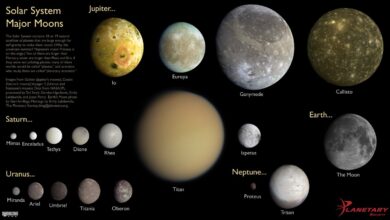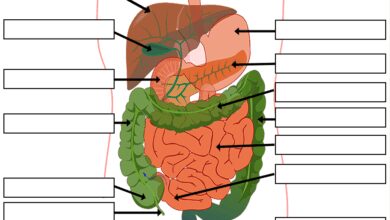System Haptics: 7 Revolutionary Ways This Technology is Changing Interaction
Imagine feeling the texture of a fabric through your phone or sensing a virtual heartbeat in a game—this isn’t sci-fi. Welcome to the world of system haptics, where touch meets technology in the most immersive ways possible.
What Are System Haptics? A Deep Dive into Touch-Based Feedback

System haptics refers to the technology that simulates the sense of touch by using vibrations, motions, and forces in digital devices. Unlike simple vibrations in early mobile phones, modern system haptics deliver precise, nuanced feedback that mimics real-world interactions. This technology is now embedded in smartphones, wearables, gaming consoles, and even medical devices.
The Science Behind Touch Simulation
At its core, system haptics relies on actuators—tiny motors that generate tactile feedback. These actuators respond to user inputs or environmental cues within software, producing vibrations that vary in intensity, duration, and frequency. The human skin can detect subtle differences in these signals, allowing developers to simulate textures, clicks, resistance, and even temperature changes.
- Linear resonant actuators (LRAs) provide smooth, directional vibrations.
- Eccentric rotating mass (ERM) motors create broader, less precise vibrations.
- Piezoelectric actuators offer ultra-fast response times and high fidelity.
“Haptics is the missing link in multisensory computing—without touch, digital experiences remain incomplete.” — Dr. Lynette Jones, MIT Senior Research Scientist
How System Haptics Differ from Basic Vibration
Traditional vibration alerts are binary: on or off. In contrast, system haptics use waveforms and algorithms to produce context-aware feedback. For example, Apple’s Taptic Engine uses system haptics to simulate button presses on the iPhone’s virtual keyboard, giving users a tactile confirmation without physical keys.
This level of sophistication allows for dynamic responses. When scrolling through a list, the device can simulate the feeling of passing over individual items. In navigation apps, a gentle pulse might indicate a turn is approaching—subtle yet effective.
The Evolution of System Haptics: From Buzzers to Immersive Feedback
The journey of system haptics began in the 1970s with rudimentary force-feedback systems in flight simulators. Over decades, this technology has evolved from clunky mechanical resistance to micro-precision touch simulation. Today, system haptics are integral to user experience design across industries.
Early Beginnings: Gaming and Simulation
The first widespread use of haptic feedback was in gaming. In 1997, Nintendo introduced the Rumble Pak for the Nintendo 64, allowing players to feel in-game actions like collisions and explosions. This marked the beginning of consumer-level haptics.
Soon after, PC gaming wheels and joysticks adopted force feedback to simulate road resistance and turbulence. These early systems laid the groundwork for more advanced system haptics by proving that tactile feedback enhances immersion and control.
Smartphones Revolutionize System Haptics
The real leap came with smartphones. As physical buttons disappeared, manufacturers needed a way to provide tactile feedback. Apple’s introduction of the Taptic Engine in the iPhone 6S was a game-changer. It used linear actuators to deliver precise, localized vibrations that mimicked button clicks, making virtual interfaces feel more tangible.
Android devices followed suit, with companies like Samsung and Google refining their own versions of system haptics. The Pixel phones, for instance, use Google’s custom haptic engine to deliver context-sensitive feedback across the OS.
How System Haptics Work: The Technology Behind the Touch
Understanding how system haptics function requires a look at both hardware and software components. It’s not just about shaking a device—it’s about orchestrating a symphony of micro-movements that align with visual and auditory cues.
Key Hardware Components in System Haptics
The effectiveness of system haptics depends heavily on the quality of the actuators and sensors. Modern devices use a combination of:
- Actuators: As mentioned, LRAs and piezoelectric elements are preferred for precision.
- Sensors: Accelerometers and touch sensors detect user input and environmental changes.
- Controllers: Dedicated haptic driver chips interpret software commands and regulate actuator behavior.
For example, the Bosch Sensortec BHA260 is a haptic actuator driver designed specifically for mobile devices, offering low power consumption and high responsiveness.
Software Integration and Haptic Design
Hardware alone isn’t enough. System haptics require sophisticated software frameworks to define when and how feedback should occur. Apple’s Haptic Feedback API allows developers to integrate custom vibrations into apps using predefined patterns like “impact,” “notification,” or “selection.”
Similarly, Android’s Vibrator API enables developers to create complex vibration sequences. With the rise of haptic design tools like Wahse, designers can now prototype tactile experiences as easily as they design UI layouts.
Applications of System Haptics Across Industries
System haptics are no longer limited to consumer electronics. Their ability to convey information through touch makes them invaluable in fields where visual or auditory attention is limited or overloaded.
Smartphones and Wearables
In smartphones, system haptics enhance usability by providing silent, intuitive feedback. From keyboard taps to camera shutter clicks, these micro-vibrations reduce cognitive load. Wearables like the Apple Watch use haptics to deliver discreet notifications—tapping your wrist like a gentle nudge from a friend.
Fitness trackers use haptics to guide breathing exercises or alert users to heart rate anomalies. The Fitbit Sense 2, for instance, uses haptic pulses during guided meditation sessions to help users stay focused.
Gaming and Virtual Reality
In gaming, system haptics transform gameplay. The PlayStation 5’s DualSense controller features adaptive triggers and advanced haptics that simulate tension when drawing a bowstring or resistance when driving over rough terrain.
VR headsets like the Meta Quest 3 integrate hand tracking with haptic gloves (in development) to simulate object manipulation. Companies like HaptX are pioneering full-hand haptic gloves that provide realistic touch feedback in virtual environments.
Automotive and Driver Assistance
Modern vehicles use system haptics in steering wheels and seats to alert drivers. A vibrating steering wheel can signal lane departure, while a pulsing seat might indicate a collision risk from the rear.
BMW and Tesla have integrated haptic feedback into touchscreens to mimic button presses, reducing driver distraction. As autonomous driving advances, system haptics will play a key role in handover alerts—letting drivers know when they need to resume control.
System Haptics in Accessibility: Bridging the Sensory Gap
One of the most impactful uses of system haptics is in accessibility. For individuals who are visually impaired or deafblind, touch-based feedback can be a primary mode of communication.
Assistive Devices for the Visually Impaired
Smart canes equipped with system haptics can vibrate to indicate obstacles or changes in elevation. The WeWALK smart cane uses ultrasonic sensors and haptic feedback to guide users around obstacles in real time.
Braille displays are also evolving. Refreshable Braille devices now combine tactile dots with system haptics to provide dynamic content reading, making digital information more accessible.
Haptic Communication for Deaf and Deafblind Users
Wearables like the VibroText bracelet convert speech or text into haptic patterns, allowing users to “feel” conversations. These systems use Morse-like codes or custom mappings to represent letters and words.
In educational settings, haptic vests are being tested to teach language and music to deaf children by translating sound frequencies into body vibrations.
Innovations and Future Trends in System Haptics
The future of system haptics is not just about better vibrations—it’s about creating a fully immersive sensory experience. Researchers are exploring new materials, AI integration, and even haptic holograms.
Ultrasound and Mid-Air Haptics
One of the most exciting frontiers is ultrasound-based haptics. Companies like Ultrahaptics (now part of Bosch) use focused sound waves to create tactile sensations in mid-air. Users can “feel” buttons floating in space without any physical contact.
This technology has applications in automotive dashboards, medical training, and public kiosks where hygiene is a concern. Imagine adjusting your car’s climate control with gestures and feeling a virtual button click in the air.
AI-Driven Adaptive Haptics
Artificial intelligence is beginning to personalize system haptics. AI can learn a user’s sensitivity to vibrations and adjust feedback intensity accordingly. It can also predict when haptic cues are most effective based on context, such as reducing notifications during sleep or increasing them in noisy environments.
Future systems may use biometrics—like heart rate or skin conductivity—to modulate haptic responses, creating emotionally responsive interfaces.
Challenges and Limitations of System Haptics
Despite rapid advancements, system haptics face several hurdles that limit their widespread adoption and effectiveness.
Battery Consumption and Power Efficiency
Haptic actuators, especially high-fidelity ones, consume significant power. In mobile devices, prolonged haptic use can drain batteries quickly. Engineers are working on low-power actuators and predictive haptic engines that activate only when necessary.
Piezoelectric actuators show promise here, as they require less energy than traditional motors. However, they are more expensive and harder to manufacture at scale.
Standardization and Fragmentation
Unlike visual or audio standards, there’s no universal framework for haptic design. Each platform—iOS, Android, Windows—has its own APIs and guidelines. This fragmentation makes it difficult for developers to create consistent haptic experiences across devices.
Organizations like the World Wide Web Consortium (W3C) are exploring haptic web standards, but progress is slow. Without standardization, the potential of system haptics remains underutilized.
System Haptics in Everyday Life: Real-World Examples
To understand the impact of system haptics, let’s look at how they’re already shaping daily interactions.
iPhone’s Haptic Touch vs. 3D Touch
Apple replaced 3D Touch with Haptic Touch in newer iPhones. While 3D Touch relied on pressure sensitivity, Haptic Touch uses long-press gestures combined with system haptics to simulate depth. A subtle vibration confirms the action, maintaining usability without the hardware complexity of pressure sensors.
This shift shows how system haptics can compensate for hardware limitations while preserving user experience.
Fitness Trackers and Health Monitoring
Devices like the Garmin Venu 2 use system haptics to guide breathing exercises. During a mindfulness session, the watch vibrates in sync with inhalation and exhalation, helping users maintain rhythm.
Some experimental pacemakers use haptic feedback to alert patients to irregular heartbeats, offering a discreet alternative to audible alarms.
Smart Home and IoT Integration
Smart thermostats like the Nest Learning Thermostat use haptic feedback when adjusting temperature. Turning the dial produces a series of clicks, simulating mechanical resistance even though it’s fully digital.
In smart locks, haptics confirm successful unlocking or alert users to failed attempts, enhancing security and usability.
What are system haptics?
System haptics are advanced tactile feedback systems that use vibrations, motions, and forces to simulate touch in digital devices. They go beyond simple buzzing to deliver precise, context-aware sensations that enhance user interaction.
How do system haptics improve user experience?
They provide intuitive, silent feedback that reduces reliance on visual or auditory cues. This improves accessibility, reduces distraction, and makes virtual interfaces feel more natural and responsive.
Which devices use system haptics?
Smartphones (like iPhones and Pixels), wearables (Apple Watch, Fitbit), gaming controllers (PS5 DualSense), VR systems, automotive interfaces, and assistive technologies all use system haptics to varying degrees.
Can system haptics be customized?
Yes, many modern devices allow users to adjust vibration intensity or choose from preset haptic patterns. Developers can also create custom haptics using platform-specific APIs like Apple’s Haptic Engine or Android’s Vibrator API.
What’s the future of system haptics?
The future includes mid-air haptics, AI-driven personalization, full-body haptic suits, and integration with AR/VR. Advances in materials and energy efficiency will make haptics more immersive and accessible across everyday devices.
System haptics have evolved from simple buzzes to sophisticated touch-based communication systems. They enhance usability, accessibility, and immersion across smartphones, wearables, gaming, automotive, and healthcare. As technology advances, we’re moving toward a world where digital interactions feel as real as physical ones. With innovations like ultrasound haptics and AI adaptation on the horizon, the sense of touch is becoming an essential layer of human-computer interaction. The future isn’t just seen or heard—it’s felt.
Further Reading:









